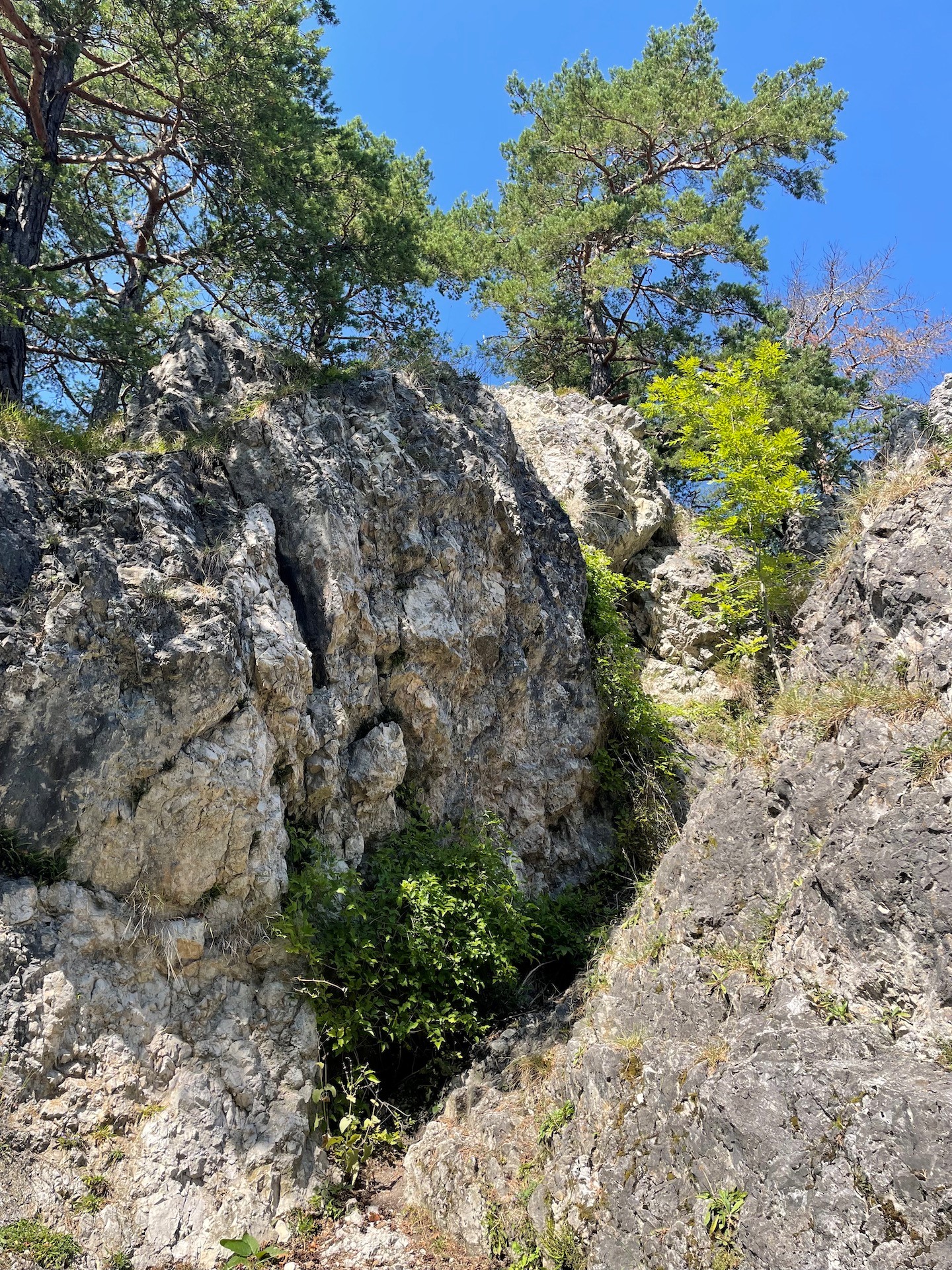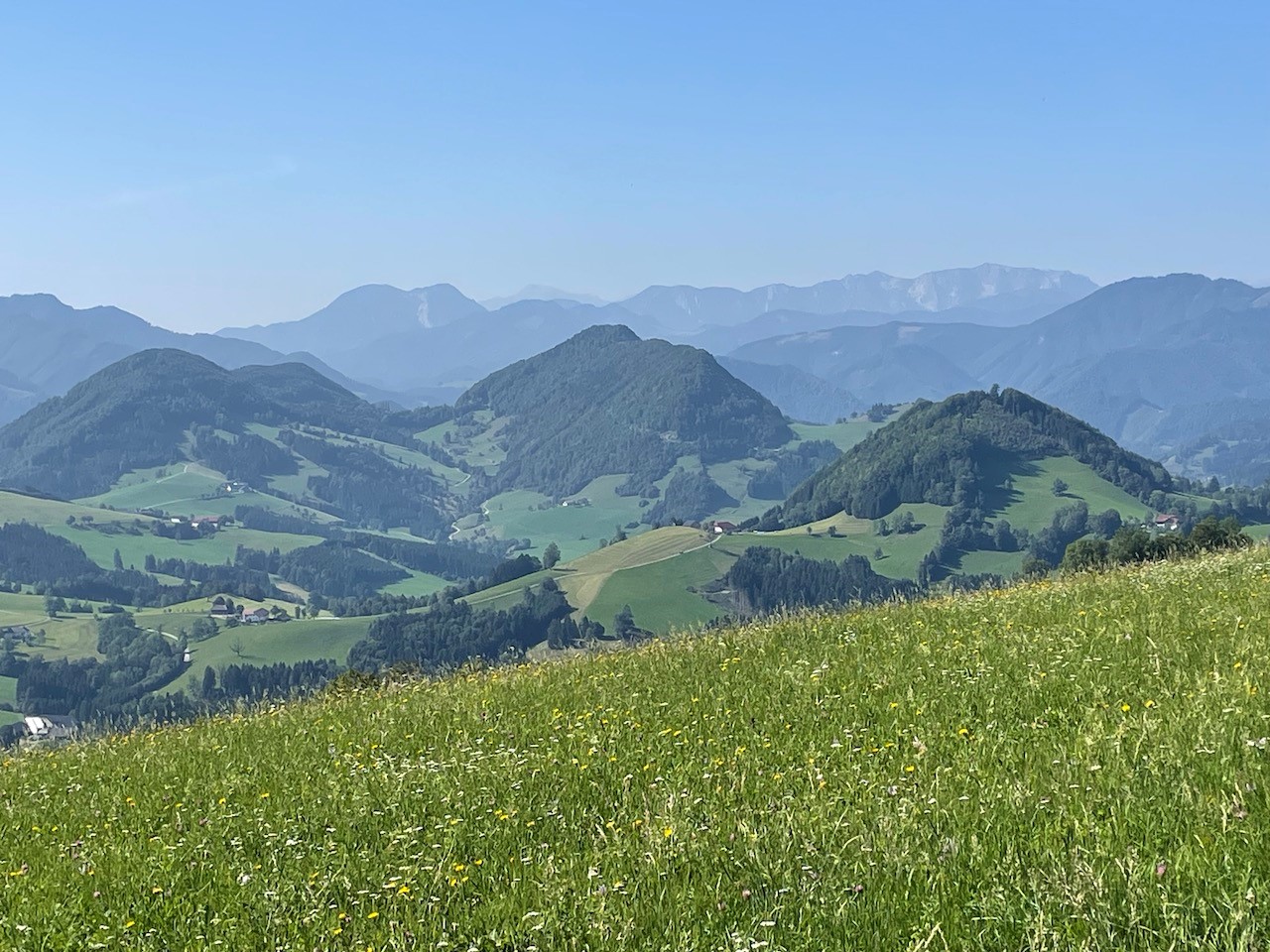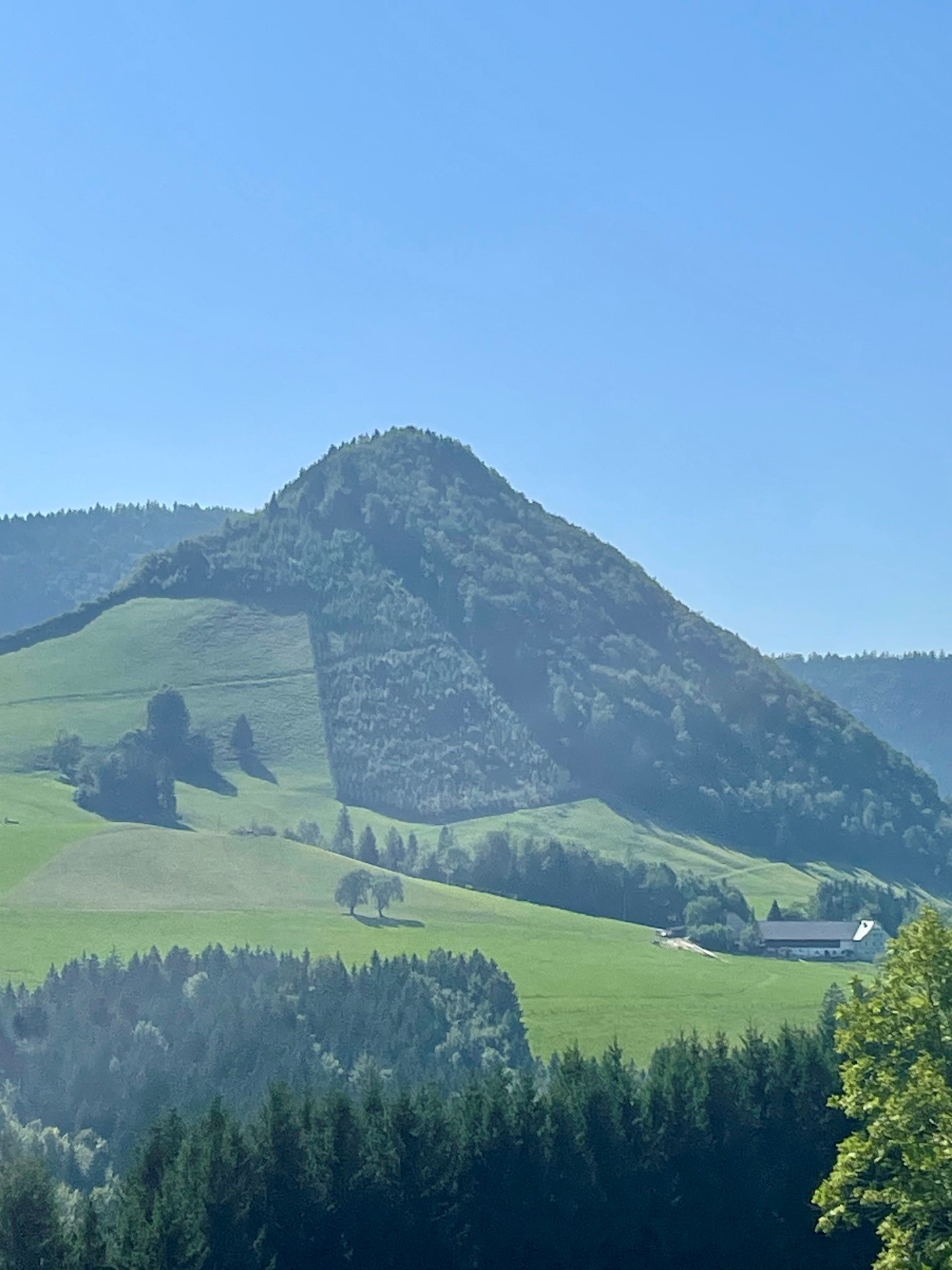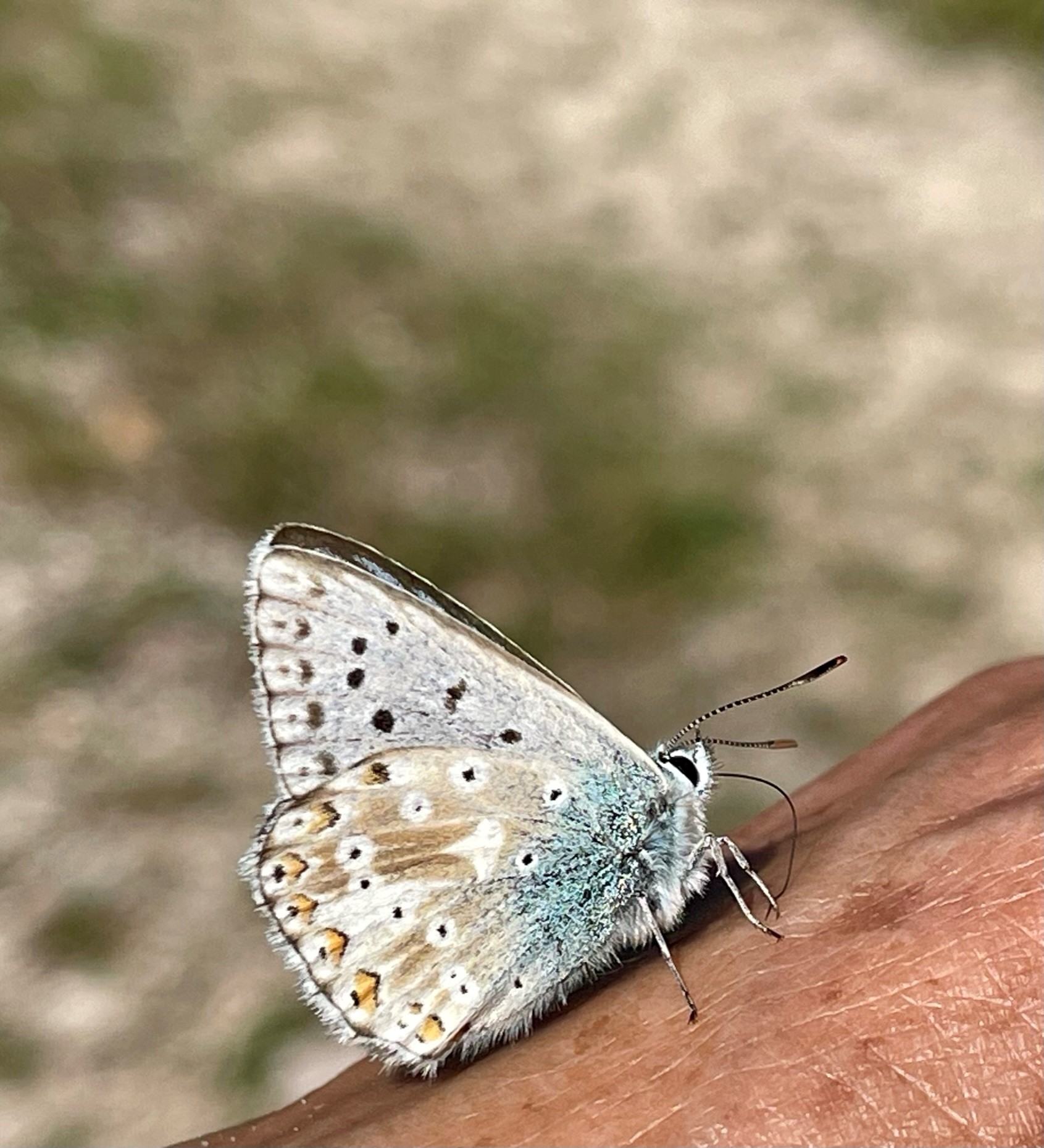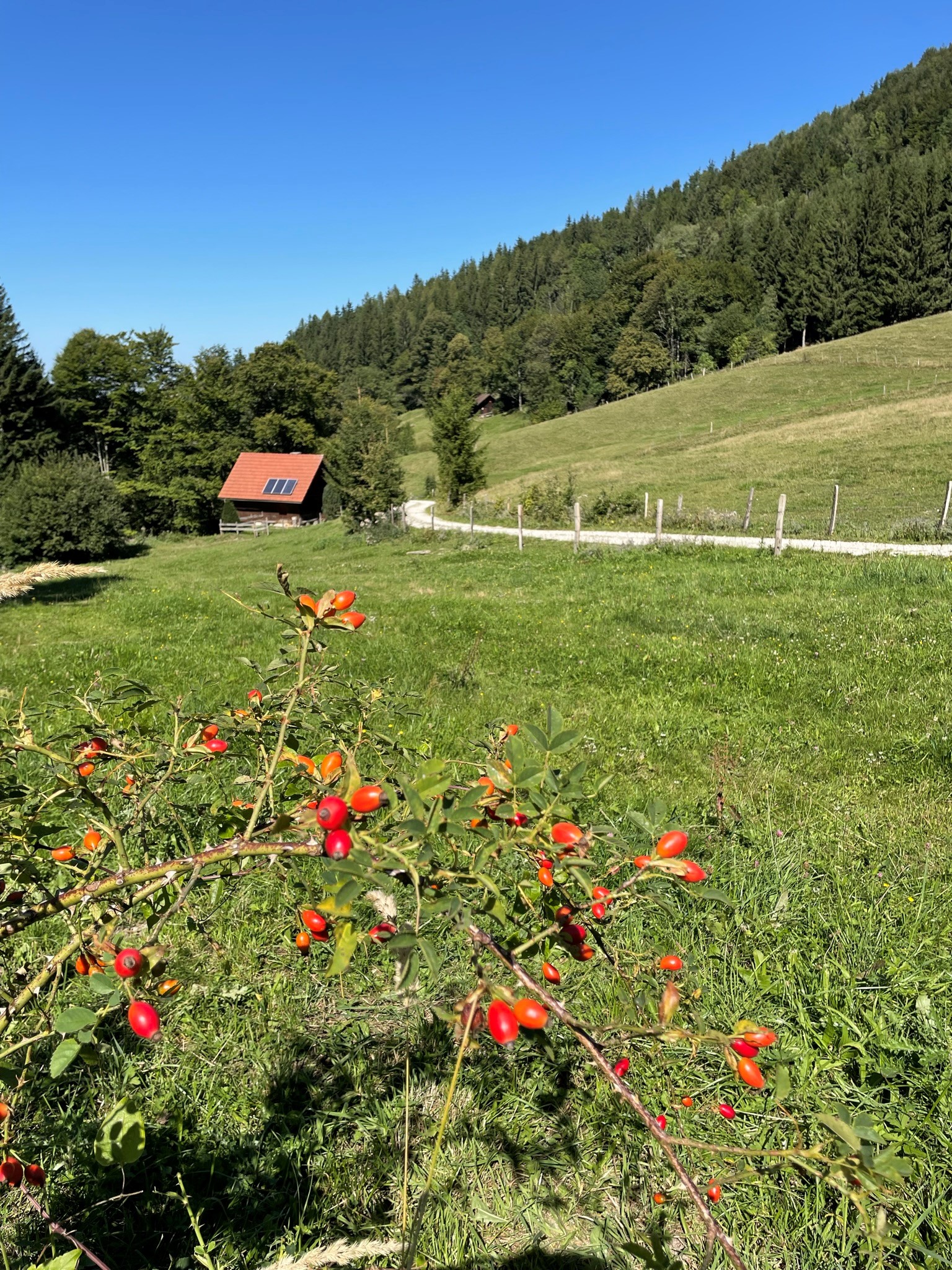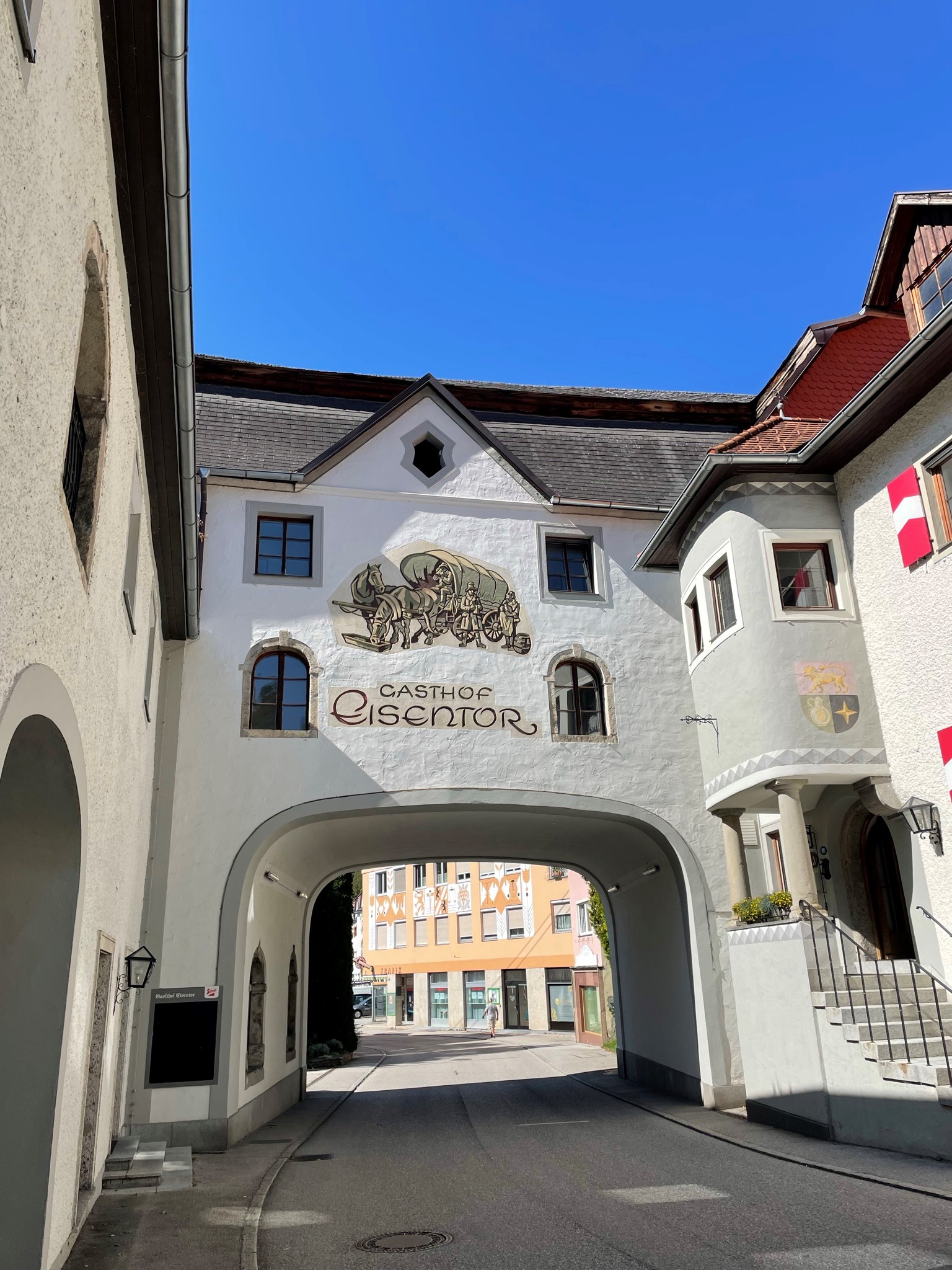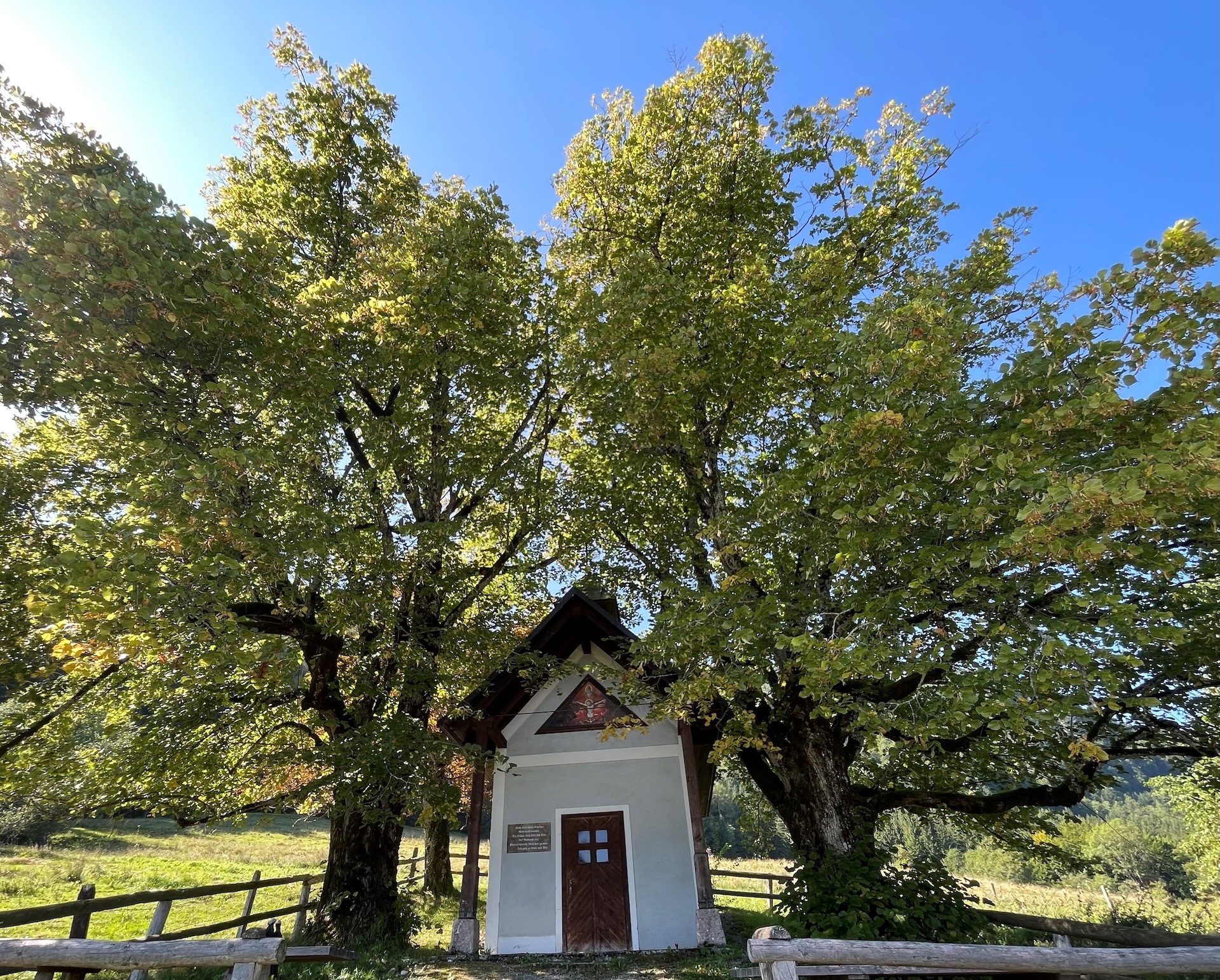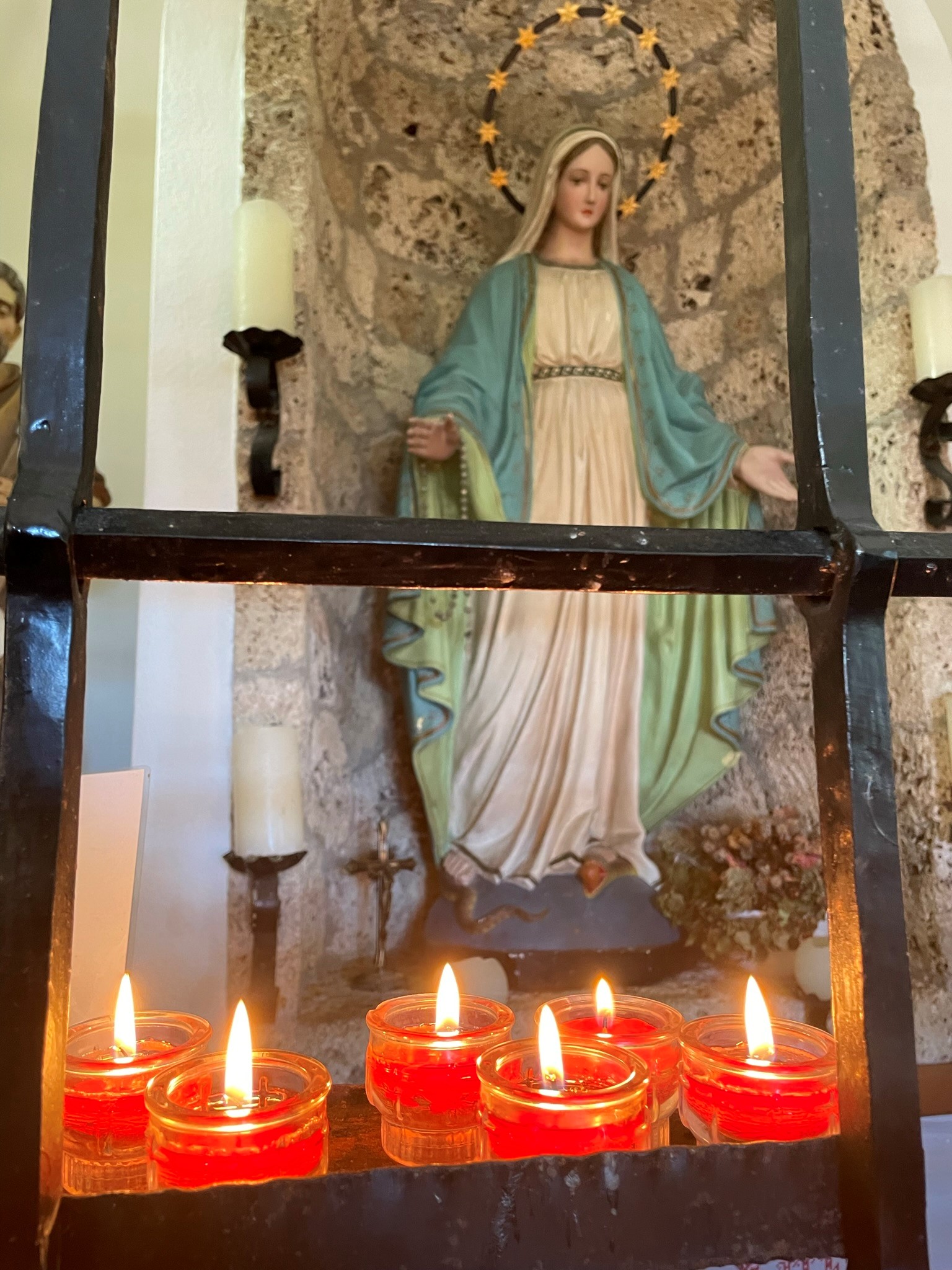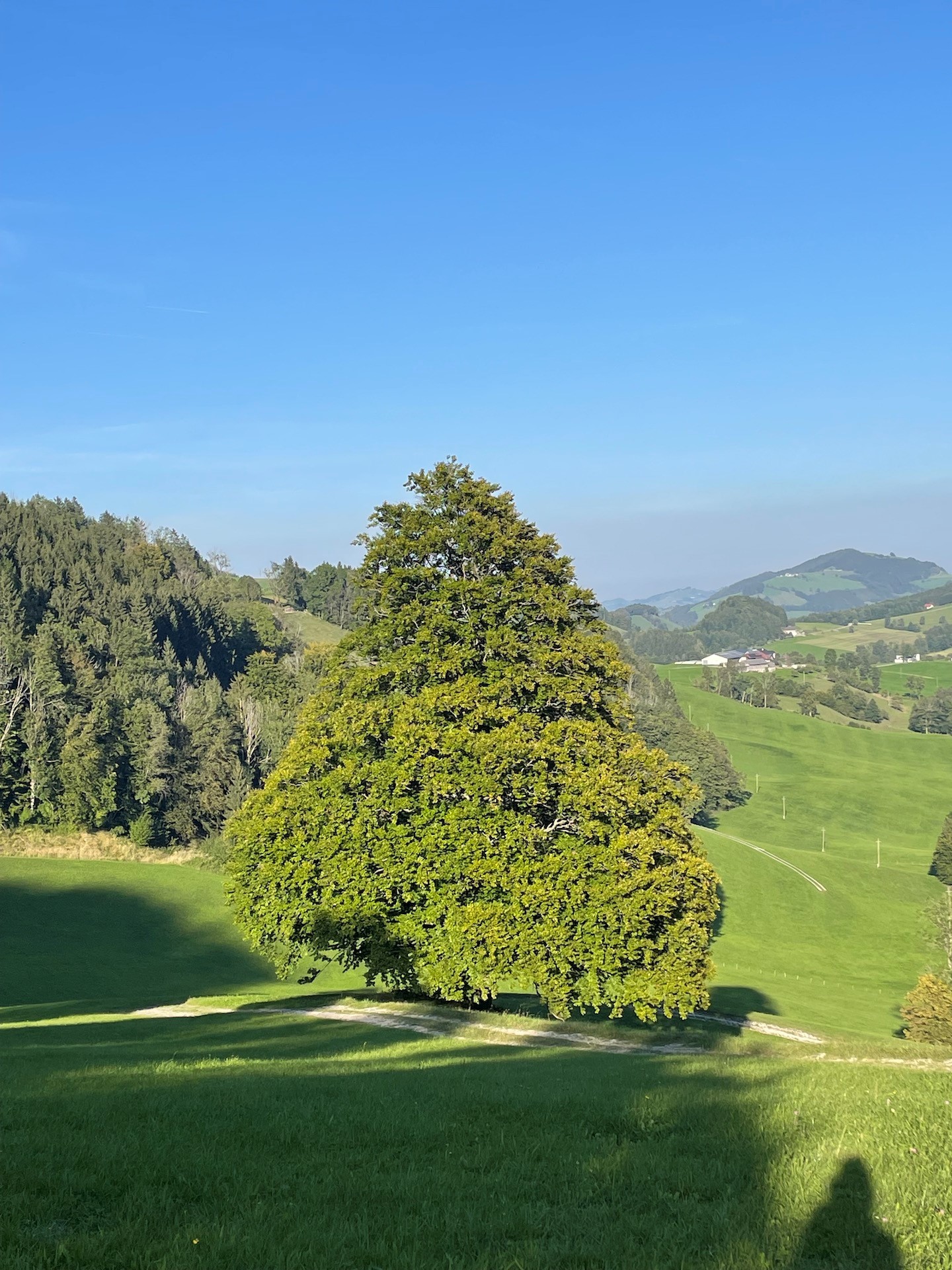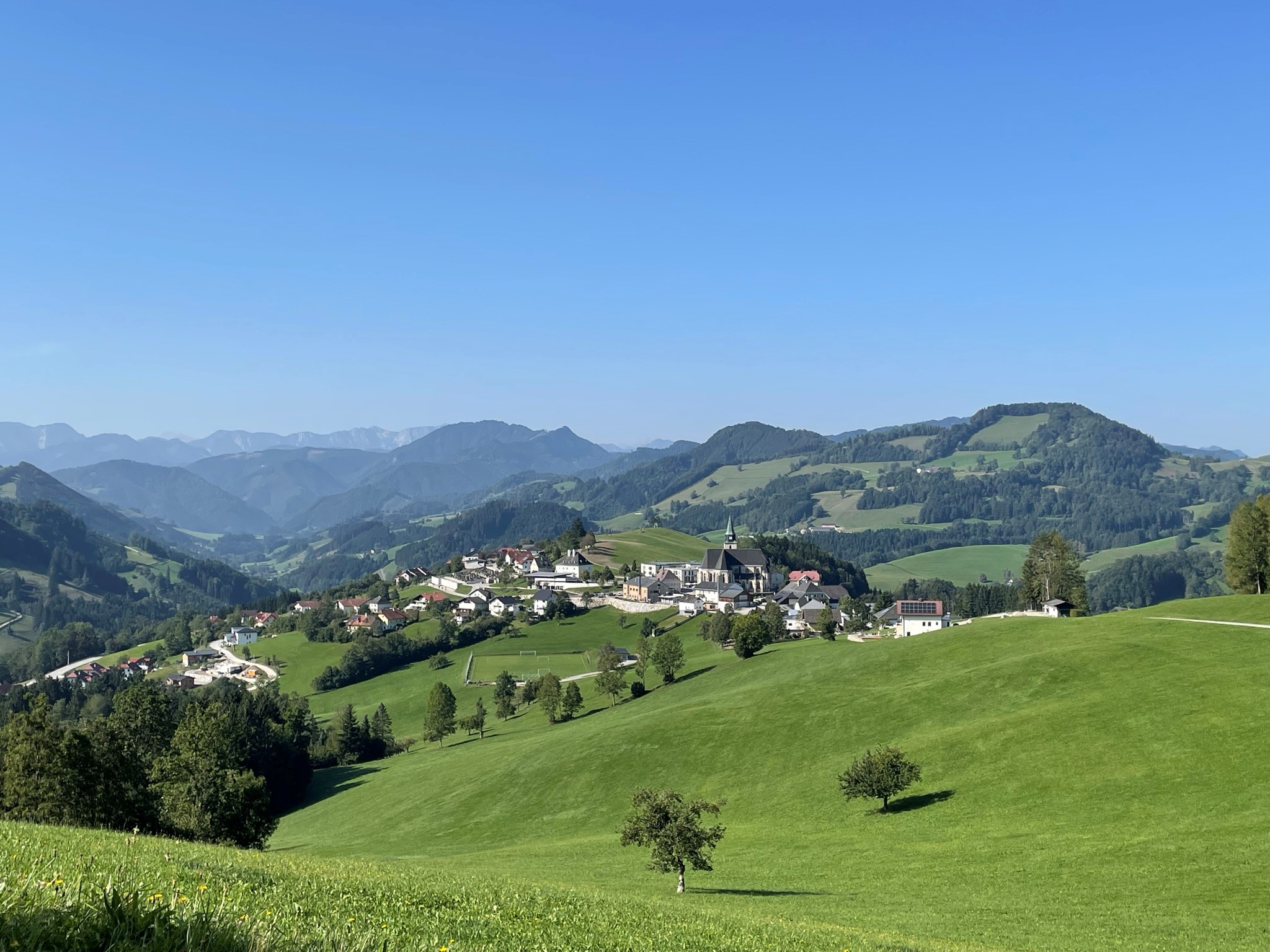SEBALDUSWEG
Sebaldusweg in Ennstal/Upper Austria
The name of this four day hike is connected to Saint Sebaldus, a little known saint in Austria, except by locals living in this area. Tradesmen brought the story of St. Sebaldus (a saint venerated in Nuremberg, Germany) to the area called Ennstal at the foothills of the Alps. Legend tells that he stopped on the way from Rome to Nuremberg at the place “Heiligenstein” where he lived as an hermit in a cave for fifteen years. Heiligenstein (Sacred stone) is at the top of a 782 meter high mountain with bizarre rock formations and a small well. The rock was venerated since ancient times. Like so often, Christians usurped this sacred place for their own needs. They built a church and made the cave into a grotto containing a stone sculpture of the saint. It became such a popular pilgrimage destination during the time of counterreformation that an inn was built beside the church.
Pilgrimage church St. Sebaldus at Heiligenstein
.
.
View from the top of the rock down to the church
.
.
At the top, the rock is split in two parts
.
.
View to the chapel containing the grotto of St. Sebaldus
.
.
Stone sculpture of St. Sebaldus – the shells and walking stick symbolizing him as a pilgrim. In former times, he was venerated by women looking for good husbands. Little statues of newly married couples show that this custom even exists today. Another custom probably going back to prehistoric times survived for a long time: the “Hebekult”. Young men who could lift the stone sculpture from the ground where said to be free of the cardinal sin. Women who could lift a wooden crucifix were promised to find a husband in one year. The stone sculpture was later anchored to the ground and the custom died out.
.
.
.
The area, “Nationalparkregrion Ennstal” in Upper Austria, is only a two hour car drive west of Vienna. The river Enns flows through this peaceful, open land with uniquely shaped hills and mountains. Single, huge farmhouses are nestled into the landscape.
Sometimes, a wonderful scent of freshly cut grass filled the air.
.
.
For a long time, this little deer did not recognize us and was grazing peacefully in the meadow.
.
.
On the first day of the hike, this beautiful butterfly landed on my left hand and stayed there for at least 10 minutes. It was great walking with this gorgeous being!
.
.
The bright, red fruit of wild roses are always a sign that fall is approaching
.
.
A beautiful renovated inn in the village Losenstein
.
.
View from a “Gastgarten” (garden of an inn) of the surrounding area
.
.
Little chapels and shrines are scattered along the way. This chapel is called Nösteltaler Kapelle.
.
.
There are many pictures of a burning heart pierced by a sword – a Christian symbol of compassion.
.
.
Many candles were donated in front of the altar of the Virgin Mary. The energy in this chapel was so peaceful that we stayed there for quite a while and read poetry of John O’Donahue. His book ,”To bless the space between us”, is always a companion on our hikes.
.
.
We were in awe of this powerful beech tree.
.
.
Looking up at the thick foliage and round branches covered by lichen
.
.
My friend Sigrid and I under the beech tree
.
.
This charming little village called Maria Neustift even had a Cafe where I had my favorite Eiscafe with lots of whipped cream.
A special treat was the hotel Ennstalerhof in Großraming were we stayed every night. The innkeeper’ s wife is half Russian and half Ukrainian and an excellent cook. One of my favorite meals was Plov, an Uzbekistan rice dish. At the end of the meal, we were served Vodka in tasteful, delicate Russian glasses on a mirror tray with a little tea candle in the center – a treat not only for the stomach but also for the eyes.
Plov, an Uzbekistan food
.
On our pilgrimage, we had interesting encounters. One time we met a 95 year old hiker in good health with refreshing vitality. We also got to know a woman who raised three children, two of them were severely disabled at birth. Both of her boys received doctorates at a university. Her warm, joyful heart was a great inspiration for handling difficult life situations. We left with great thankfulness for everything we experienced.
.
.
.




